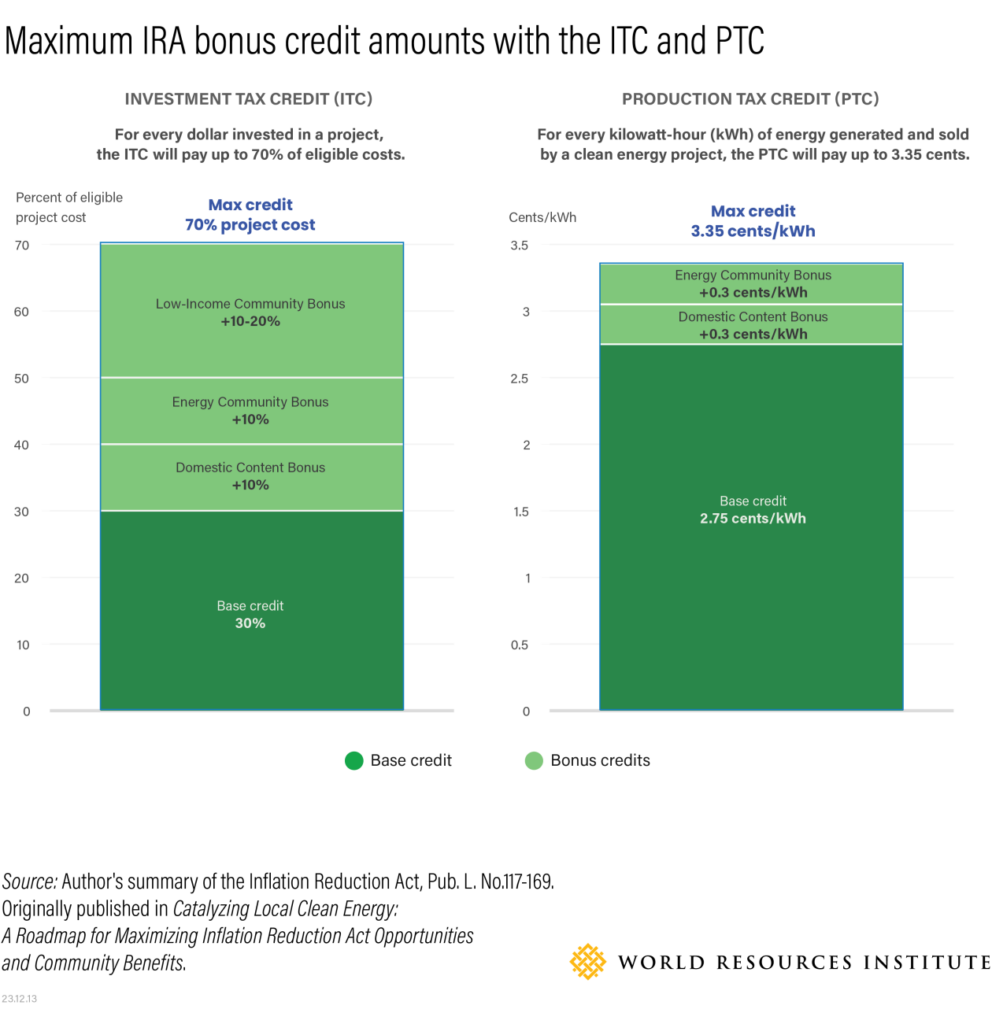Elective Pay Gives Tax-exempt Entities Greater Leverage in Energy Procurement and Paves the Way for More Public Ownership of Clean Energy Assets.
For local governments, nonprofits and other tax-exempt entities, elective pay makes direct ownership of clean energy infrastructure easier and more affordable than before.
Previously, if any government or tax-exempt organization wanted to take advantage of clean energy tax credits, they were required to purchase power from private entities. Such arrangements often required special project financing vehicles which reduced the overall value of the project for these entities. In addition, larger projects primarily took the form of power purchase agreements (PPAs). These involve buying power from projects that may not be directly sited in a community, thus reducing the local economic and social benefits of investing in clean energy. Even on-site solar and other projects constructed on local government facilities and land were generally owned and operated by third parties using smaller-scale PPAs and lease models.
If public and nonprofit organizations wanted to avoid these financing arrangements and build their own clean energy infrastructure, it meant forgoing energy tax credits. This increased the price of direct ownership projects, limiting local governments’ clean energy investments in scale and ambition.
Now, thanks to the IRA’s elective pay provision, local governments and other tax-exempt entities can receive the full value of federal tax credits without entering into third-party arrangements. This makes direct ownership of clean energy assets a more viable pathway, opening up new opportunities to drive local project development, job creation and other benefits associated with clean energy deployment within local communities.

